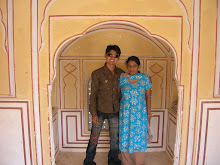The theme of "interconnectivity" draws primarily from a definition of the Internet as "a vast network that connects many smaller groups of linked computer networks, on and through which information is stored and transmitted. The 'interconnected' character of the Internet is one of the things that makes it so popular and powerful in facilitating communication and electronic commerce" (Fisher and Wang, online). I extend this notion of linking networks to include books, concepts, ideas, and topics, similar to the way Gilles Deleuze and Felix Guattari refer to texts as machines. If a book, as Deleuze and Guattari claim, is a "little" but literary machine, the computer might also be considered a machine: perhaps it is also an assemblage that connects with other assemblages; has neither subject nor object but only itself; and is made of variously formed matters, dates, and speeds. In A Thousand Plateaus, both authors write that "[i]n a book, as in all things, there are lines of articulation or segmentarity, strata and territories; but also lines of flight, movements of deterritorialization and destratification," all of which quantify writing (p. 3, my emphasis). The "only question is which other machine the literary machine can be plugged into, must be plugged into in order to work" (p. 4).
In using the term "interconnectivity," I am merely emphasizing a point that students most likely will have discovered later in their academic careers: the more students read and engage in various disciplines at the university, the more they encounter similarities in ideas and concepts. I simply try to make these relations manifest in my pedagogy largely through the notion of an "interplay" of topics.
In the first two weeks of the semester, we focus on three modes of communication--orality, literacy, and post-literacy--and semiotics. We read Jay David Bolter's "The Computer as a New Writing Space," a chapter in his book Writing Space; three chapters from Jack Goody's Domestication of the Savage Mind; Daniel Chandler's "Semiotics for Beginners"; and "Observing the Ordinary," in Donald McQuade and Christine McQuade's Seeing & Writing. Via the readings, I introduce topics ranging from anthropology, sociology, technology, semiotics, and ideology. After we read and examine one text, I encourage students to refer to the previous text(s). At the end of the two weeks, the term "interconnectivity" begins to make more sense to the students. My hope is that students will understand that while something that one reads may not make sense initially or connect with any knowledge that one already has, after further investigation and consideration, we can expect the information that was previously under consideration will make more sense, connect to other ideas, and find its place within a topos.
My other goal in the first two weeks is to express that stereotypes (i.e., ethnocentric binaries) are constructed and reconstructed, that identities can be shifted and re-presented, and that the computer space is one such place for re-presenting identities. In a way, my second goal represents a reflexive gesture, in that 1) we begin the semester thinking about the Internet as a topos where interconnectivity occurs; 2) we extend the notion of interconnectivity to print, where we invest our energies in learning about classifications and hierarchies in language and identities; then 3) we refer back to the Internet as a place where we might begin to problematize those classifications by employing both a more fluid writing medium (hypertext) and a personal style of writing (mystory). In keeping with this reflexive gesture, allow me to return to how we approach post-literacy in the classroom.
http://9898048483.4shared.com
http://rajkot.4shared.com
http://mobilerepair.4shared.com
Thursday, October 8, 2009
Subscribe to:
Post Comments (Atom)

No comments:
Post a Comment